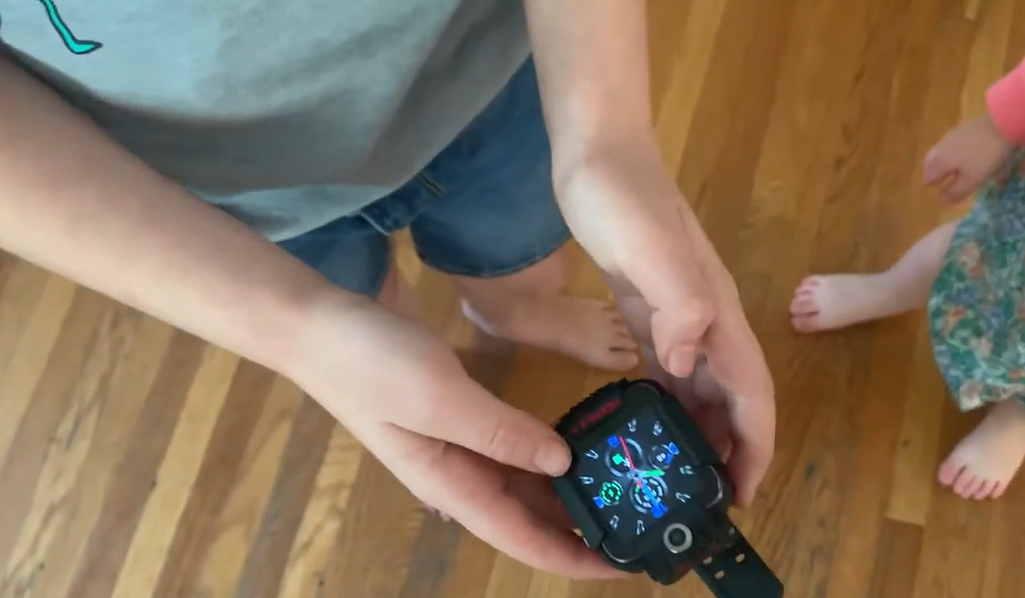Long known for its stylish appearance and ability to track fitness, the Samsung Galaxy Watch is now playing an unexpected but very useful role in kids’ education. When the watch is in Kids Mode, it transforms from a fashionable wrist accessory to a guided educational companion, which is what parents looking for safer, smarter alternatives to early smartphones are finding. With the help of the Samsung Kids platform and numerous apps that have been approved by educators, the gadget creates a digital environment that is remarkably clear in its goal: to integrate independence, safety, and education into a single wearable.
The School Time feature, which turns off distracting features during school hours, is what most resembles a contemporary classroom assistant on the Galaxy Watch. By using this mode, kids are taught to stay concentrated on their studies while still having the option to contact their parents in an emergency. The methods that educational leaders like Sal Khan of Khan Academy have long advocated—establishing boundaries that promote learning while reducing distractions—are echoed in this disciplined approach.
The watch also performs exceptionally well in the app library. Learning becomes an exciting adventure with apps like Wild Kratts’ Creature Power, Barbie Color Creations, and Math Tango. A forward-looking viewpoint is also revealed by the inclusion of apps for emotional well-being, which brings to mind discussions led by child psychologists who stress that education encompasses more than just reading and math skills but also empathy and resilience. A gadget that encourages controlled exploration has helped parents who were previously afraid of digital exposure.
Samsung Galaxy Watch (Kids Mode) – Key Information
| Feature | Details |
|---|---|
| Name | Samsung Galaxy Watch (Kids Mode Enabled) |
| Manufacturer | Samsung Electronics |
| Operating System | Wear OS (in partnership with Google) |
| Release Year | 2025 (Kids Mode debut on Galaxy Watch 7 LTE) |
| Special Features | Samsung Kids platform, School Time mode, GPS tracking, Family Link app |
| Educational Benefits | Teacher-approved apps for math, creativity, and emotional learning |
| Connectivity | LTE-enabled, calling and texting with approved contacts |
| Safety Features | Location tracking, parental controls, screen time limits |
| Health & Activity | Step counts, distance goals, fitness tracking for kids |
| Official Reference | Samsung Global Newsroom |

The Galaxy Watch has extremely effective but carefully constrained communication. Only a trusted list of contacts that parents have approved can receive calls or texts from children. In a lot of ways, this builds an incredibly protective digital wall that lets children be independent while maintaining safe boundaries. Public leaders like Michelle Obama have emphasized the value of gradually establishing trust with kids, and the Galaxy Watch reflects this idea by fusing connectivity with parental supervision.
The integration of health and fitness is equally compelling. Children can track their distance goals, check their step counts, and even participate in little activities that encourage movement. The watch gently teaches kids the lifelong value of striking a balance between study and exercise by gamifying physical well-being. This dual focus aligns with international campaigns that emphasize how integrating playful fitness can dramatically reduce children’s sedentary behavior.
The device’s core functionality is still parental control. Guardians can monitor usage reports, approve or block apps, and even set daily time limits for their children’s watch use by using Google’s Family Link. Compared to earlier devices where parents had limited visibility into their child’s activity, this collaborative participation in digital growth is noticeably improved. It fosters a cooperative rhythm in homes, giving kids a sense of security and direction.
The GPS tracking feature provides a very long-lasting sense of security. Today’s parents are especially concerned about their kids’ safety in public places, and the Galaxy Watch offers a dependable way to monitor them in silence. The watch stays firmly on the wrist and provides a constant link between parent and child, unlike smartphones that can be misplaced or abused.
However, the watch’s capacity to act as a link between structured learning and play might be its greatest educational strength. It exemplifies a very adaptable balance by promoting curiosity through entertaining apps while simultaneously limiting abuse. This flexibility is in line with worldwide trends in education, which use technology-enhanced learning and gamification to get kids ready for a digital future.
These days, rivals like Fitbit Ace LTE and Garmin Bounce, which provide only partial solutions for younger users, are frequently compared. However, Samsung’s partnership with Google to create an ecosystem that is parent-approved and teacher-tested puts the Galaxy Watch in a unique position. It is about integrating education into a child’s daily routine without becoming overbearing; it is not just about location safety or activity tracking.
Samsung has made sure that its watch is not only useful but also has a positive social impact by forming strategic alliances. Samsung’s shift into kid-focused wearables is both strategic and symbolic, much like LEGO’s transformation from a toy manufacturer to an educational leader with robotics kits. With the ability to be worn on a child’s wrist and guide them through math problems, creative exercises, and even mindfulness moments, it signals that education is no longer limited to classrooms or tablets.
In addition to providing technology, parents who give their kids a Galaxy Watch are fostering inclusion, trust, and responsibility in a digital culture that kids are increasingly observing. The Galaxy Watch now influences digital childhood in the same way that Walkmans once denoted independence in the 1980s or iPods shaped identity in the early 2000s. It turns into a symbol of responsible freedom, where exploration and safety coexist.
The gadget might become a common educational tool in the years to come as Samsung improves accessibility and expands carrier support beyond AT&T and Verizon. It has the potential to have a significant impact on society by promoting healthier lifestyles, teaching digital responsibility, and bridging the gap between education and technology in incredibly efficient ways.
